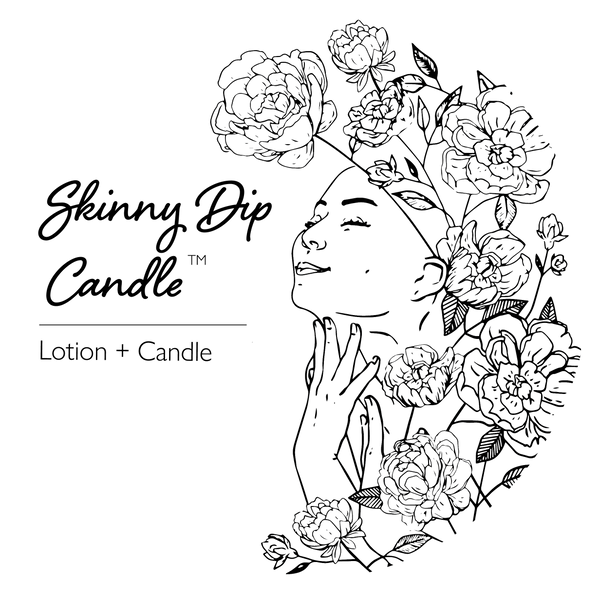If you're into candles, (and probably even if you're not), you've likely come across the expressions "clean burning" and "dirty burning." They've joined the ranks of identifiers such as sustainable, eco-friendly, green, zero waste, etc. But what do they really mean? It turns out, (like many of these trendy terms) it's not as black and white as you may think.
Most often, a dirty burning candle is labeled as such because it's made of paraffin wax, highly scented (perhaps with a questionable fragrance) and cheap/low quality ingredients. Now these aren't exactly wrong assumptions, but there's more to it than that.
Firstly, your definition of "clean" and "dirty" matters in this argument and will vary from person to person. But we will give you some scope and considerations so you can select products most suited to your principles. Is something clean because it is carbon neutral, harvested without waste, recyclable/reusable etc... or is it clean simply because it releases the least amount of toxins in your home? Yes, there is some overlap, but you'll note the differences as we continue.
The Problem with Paraffin
As we mentioned above, anything made with paraffin wax is often considered "dirty". Why? Well, it's a petroleum-derived product. Now, a quality paraffin wax isn't much (if any) more "dirty" in the at-home sense than a soy, coconut or palm wax, however how the product is more destructive to harvest (oil drilling) and produces chemical waste during the purification process. So this is the instance where you decide your scope of clean. However, be aware that there are indeed low quality paraffins that will leave your walls black. This is called sooting. Too much sooting can put toxins in the air, though low levels of soot are considered safe.
What About Plant-Based Waxes - Soy, Coconut, Palm, etc
The benefits of plant-based waxes are that they're renewable, biodegradable resources that do not require chemicals to purify. An extra benefit of soy wax specifically is it's low melt point. This means it burns cooler and requires less fuel, meaning your candle will last longer and likely produce less sooting. We actually love soy wax for many reasons, which we've covered here.
Please note: Not all farms who grow soy, coconut and palm are organic, fair trade, sustainable, etc, so while the environmental impact is generally better, it's not perfect.
How A Clean Candle Can Still Be Dirty
Just because a candle is made from quality ingredients, doesn't automatically make it a "clean" candle. These details fall on the candle-maker to know their craft.
Some things that can cause problems:
- Despite an eco-friendly cotton or hemp wick, if the candle is over-wicked, then it will burn too hot and cause a lot of sooting. It can also create a huge flame and burst a glass container!
- Too high of a fragrance percentage, even in the highest quality wax, becomes toxic. (Also, please note that most candles are NOT meant to be put on skin. Our fragrance loads are far below the safe amount to make sure they are skin-safe.)
- The container counts! We're not just talking plastic jars here (which are definitely not ok), but coconut bowls, wooden dough bowls, and other novelty containers can be flammable or unsafe to burn in.
- If your candle contains dried flora and fauna, these will release more smoke and can potentially cause fire. This is one of my pet peeves because it has become such a trendy thing and, yes, it's totally cute, but it is SO UNSAFE!
What Can You Do to Make Your Candles Safer
So how can you make sure your candle is burning at it's "cleanest"?
- Check the ingredients and learn more about the supplier. Make sure there aren't any weird fillers like formaldehyde. (Yes, this can be found in a large chain candle store which I will leave unnamed.) What sort of testing has the supplier done? Do they tell you anything about the ingredients they use?
- I hate to say it, but cheap usually does mean lower quality. No, you don't have to pay $50 for a 4oz candle to assure it's quality, but if you see a candle (of any size really) for $1, that's a red flag.
- Trim your wick to 1/4 inch before each use. Trimming your wick means the candle isn't pulling too much fuel and creating more soot.
- Don't burn in a drafty area. From an open window to an air vent, drafts can cause a myriad of unsafe circumstances.
Shameless Skinny Dip Candle Plug
We wouldn't be giving you all this information if we didn't care what went into our own body candles. So, here's what we do to make a quality, safe product just for you!
- Our ingredients are all food grade, beneficial for skin, and sourced as close to home as possible.
- Our tins are also food grade, fully recyclable or reusable. And you can use your candles to the very last drop because, even if the wick runs out, you can scoop the cool wax out to use as a balm.
- Our wicks are properly sized for the jar and crafted to be self-trimming (though please still trim if you burn for long periods of time).
- Our fragrances are kept to a minimum level to assure they won't harm your skin or release toxics fumes. This is why our candles aren't ideal for scenting a large room.
- Bonus? We reuse packaging materials to reduce waste. Also, we're always trying to improve! We know we're not perfect, but we are consistently looking for ways to reduce our impact.
Sorry for the length of this one, but we believe all this information is important and hopefully you find it useful.
